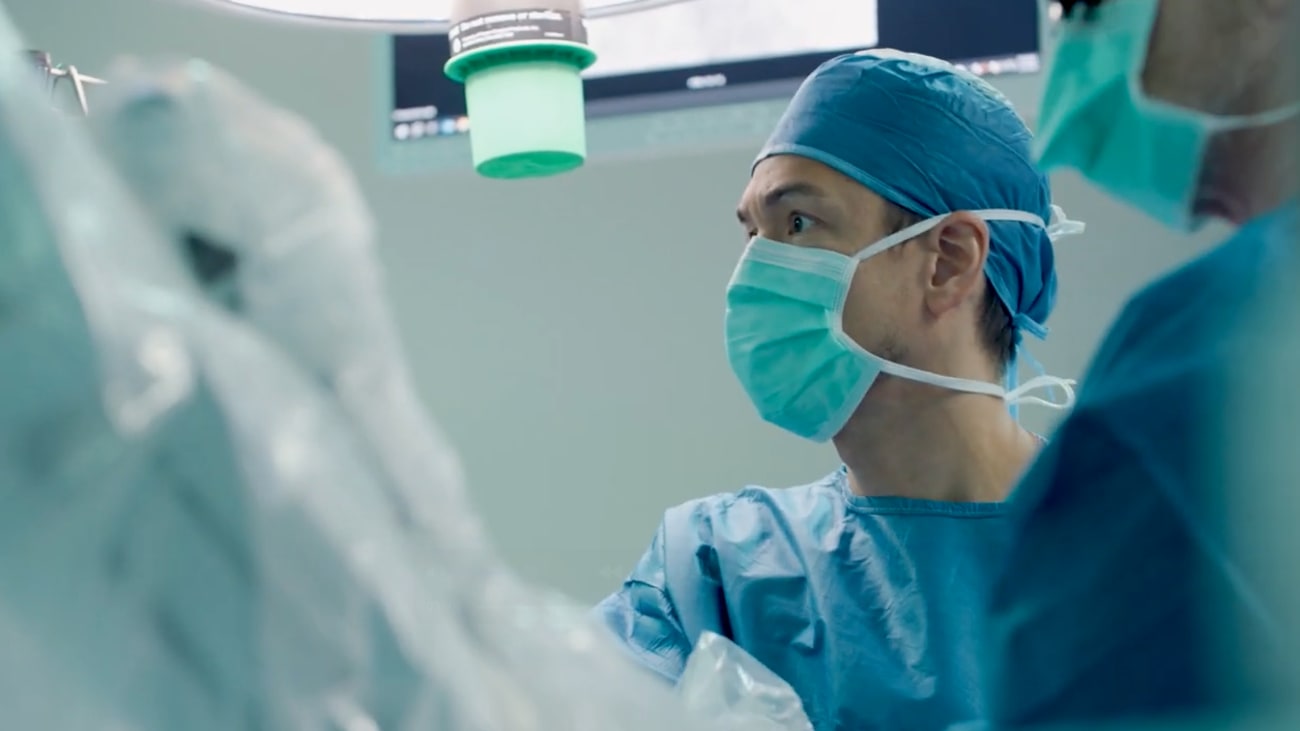

Escaping the harsh Michigan weather this past winter, Mary Lou Davis headed for a friend’s house in the Florida Keys. The active 68-year-old thought she’d pulled a muscle in her chest when she awoke feeling sore one February morning. What she didn’t know yet was that in a few days she’d have life-saving robotic-assisted heart surgery at Baptist Health Miami Cardiac & Vascular Institute.

Makoto Hashimoto, M.D.
“My father died at 48 suddenly of the widow-maker. Just dropped dead,” Ms. Davis says. “My younger sister had a stent put in a few years ago. There’s quite a history of heart disease in my family.”
To be safe, she headed for the ER at Baptist Health Fishermen’s Community Hospital, where the physician noted an abnormality in her EKG and sent her by ambulance to Miami. Ms. Davis was diagnosed with ischemic heart disease, which occurs when the heart arteries become narrowed by plaque, limiting blood flow that could potentially lead to a heart attack.
“She had severe coronary artery disease in the most important cardiac artery — the left anterior descending artery,” explains Miami Cardiac & Vascular Institute’s Makoto Hashimoto, M.D., who is one of a handful of robotic cardiac surgeons in the U.S. “The blood was not sufficiently supplying the cardiac muscle.”
It’s the exact condition that killed her father.
(Watch now: Hear Mary Lou Davis, an active 68-year-old, thought she’d pulled a muscle in her chest when she awoke feeling sore one February morning. What she didn’t know yet was that in a few days she’d have life-saving robotic-assisted heart surgery at Baptist Health Miami Cardiac & Vascular Institute.)
Ms. Davis was taken to the Institute’s cardiac catheterization lab in an attempt to open the blockage. “But they told me the blockage was too lengthy and I would need open heart surgery,” she says.
Fortunately for Ms. Davis, Dr. Hashimoto, who is also professor and director of robotic cardiac surgery at FIU Herbert Wertheim College of Medicine, had recently come to Miami from the Sapporo Cardiovascular Clinic in Japan, where he was the director of the Center of Minimally Invasive Cardiac Surgery and Robotic Cardiac Surgery. When she was told she was a candidate for a robotic procedure, she was thrilled.
In a traditional open cardiac artery bypass grafting procedure, surgeons make a large incision and crack the sternal bone to access the heart. They remove a vein from the leg or a mammary artery (from the chest) and attach it above and below the blockage, allowing blood to flow freely again, bypassing the blocked part of the original artery. It involves a lengthy hospital stay and recovery with risks of complications.
Robotic-assisted coronary artery bypass grafting involves just one small incision and three tiny holes — one to reach the heart and the others to retrieve the mammary artery — and takes about two hours to complete. “Because it is less invasive than open surgery, there are fewer risks,” Dr. Hashimoto says. “In a study of my first 200 patients in Japan, there were almost no complications and patients reported they resumed their normal daily activities in 1.5 weeks, compared to open chest surgery, which usually takes up to six months of recovery time.”
Ms. Davis’s robotic-assisted coronary artery bypass grafting took place at 1 p.m. on Friday, Feb. 7. “Luckily, I did not have to have my chest opened,” she said. “I told them I wanted to get home on Sunday to watch the Super Bowl. Friday night I took some steps and on Saturday I was walking around and had this totally successful result. Sunday at noon I was released.”
The mother of two, who now plans to split her time between Michigan and Florida, was in awe of the technology and skill involved. “They wheeled me into surgery and let me look around the room. They said, ‘You’ll be over here on the table, and Dr. Hashimoto will be over there [at the robot] doing surgery. Not even standing by me. It’s amazing. I couldn’t believe it was possible to be across the room from your surgeon.”
After the procedure, Ms. Davis was quickly back to walks along the beach, doing Pilates and playing with her dogs. “I was in the right place with the right people,” she says of her experience. “The care I got was amazing, the nursing staff was amazing and the doctors all worked together. Dr. Hashimoto is my savior. I have a new lease on life, the chance for one last chapter in my life of fun. How lucky am I to have another chance?”
The future for Ms. Davis is a good one. “Robotic-assisted coronary artery bypass grafting is a very safe and long-lasting procedure,” says Dr. Hashimoto, who is continuing to build an experienced robotic surgery team at the Institute. ”From now on, she can spend her days doing what she did before.”
To refer a patient, please call 786-596-1230 or visit BaptistHealth.net/HeartReferral.

